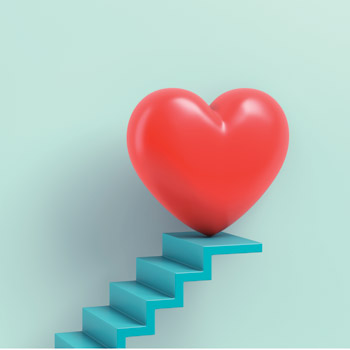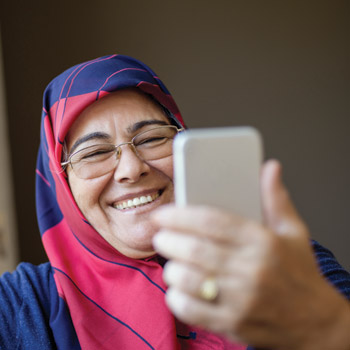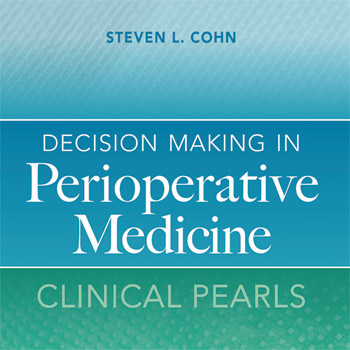Inclusivity that is accepting: Embracing different sexualities
Everyone, regardless of their sexual orientation or gender identity, deserves equal access to all of the resources, all of the benefits, and all of the protections available to others.
As a gay man in the 1980s, the AIDS pandemic dominated not only my life as a medical student but also my personal life. When I got home from my clinical rotations, which were often populated by patients succumbing to AIDS, conversations with my partner often turned to friends, acquaintances, and neighbors who were struggling with the uniformly fatal infection. Anthony Fauci, MD, was leading the scientific race to find a cure, and in my mind, there was no bigger superhero.
Being gay in the 1980s was not like it is today. The AIDS pandemic fanned the flames of anti-gay rhetoric, and gay people were openly shunned by many segments of society. Although I was partnered, I was out to only a few close friends and a brother. Through some advocacy work I had done, my medical school's leadership knew. My parents did not know.
As medical school wound down and I looked towards graduation, I was elected to Alpha Omega Alpha. Our induction dinner was to be held two days before graduation. Incredibly, Dr. Fauci, my superhero, was our guest speaker. My parents were coming to graduation but would not be able to attend the induction dinner. I was fine with that. My partner, also a huge fan of Dr. Fauci, was excited to join me and to be in the same room as our superhero. At this point, I no longer cared to hide from my classmates that I was gay.
The induction dinner was lovely. Perhaps some classmates wondered about the guy who stayed by my side all night, but I didn't care. A fellow classmate, who was lesbian, had brought her partner with her, and we spent the evening together. Dr. Fauci was sequestered at the front table, but the room was electric. As dinner wound down and we prepared to hear Dr. Fauci speak, the dean called one of our fellow students to the podium. The dean went on to explain the rigors of medical school and said that they had decided to recognize the medical students' spouses and significant others for their support. The fellow student then read the names of the partners of every heterosexual couple in the room, who stood to general applause. My classmate and her partner, and my partner and I, were not included in the recognition.
To be honest, I was not surprised. I did not feel welcomed by my medical school for who I was, and as a result, I kept my distance. But what did cut to the bone at the time was learning that those students, spouses, and significant others had been invited to share cocktails with Dr. Fauci, my superhero, before the dinner event, and I had not been included. When dinner concluded, I marched up to introduce myself and shake Dr. Fauci's hand, but the moment was colored by the sting of rejection of who I was.
The incredibly powerful story of Dr. Sisson, my coauthor for this column, has continued to swirl in my mind ever since I heard it for the first time. Everyone, regardless of their sexual orientation or gender identity, deserves equal access to all of the resources, all of the benefits, and all of the protections available to others.
The sting of exclusion that Dr. Sisson felt is sadly the tip of the iceberg of the consequences of being gay. Younger people who identify as lesbian, gay, bisexual, transgender, intersex, or questioning (LGBTIQ+) are among the most significantly marginalized and excluded members of society. They are particularly vulnerable to stigma, violence, and discrimination due to their real or perceived sexual orientation and gender identity. This has lasting consequences on their social and psychological health and substantial adverse effects on society as a whole.
LGBTIQ+ youth are at higher risk of threats and verbal, physical, and sexual abuse, yet may be unable to secure help and support from those whose duty it is to protect the community. There are often extra challenges in accessing proper sexual health services due to discrimination or lack of expertise among service providers. Sex education is often heteronormative (seeing heterosexuality as the norm in society) and does not address the needs of LGBTIQ+ youth.
Around the world, it is a sad fact that 72 countries or states currently criminalize same-sex relations between consenting adults, and in eight of these countries, they are punishable by death. Only 24 countries around the world currently allow same-sex couples to marry, though that number is slowly increasing.
While those central to young people's lives, such as peers, parents, teachers, and religious leaders, can be valuable voices in driving societal change that leads to inclusion, they can also sometimes promote harmful views and contribute to underlying and ingrained prejudices against LGBTIQ+ people. These attitudes, in turn, can limit LGBTIQ+ people's future employment options. Despite great progress in the last decade, homophobia and transphobia still exist in the workplace and remain underrepresented in conversations about diversity and inclusion.
One might think that we in the medical profession, with all of our training and our experience with the differences among each of us, would be experts in gender, sex, and sexual orientation. But in a review in the November 2020 Journal of the American Medical Informatics Association, the authors concluded that there are still knowledge gaps among clinicians, as well as practical challenges to enabling gender, sex, and sexual orientation verbiage in the EHR. It requires organizational commitment to ensure an affirming environment for all, as well as technical efforts to create an inclusive EHR.
The Park School of Communications at Ithaca College in New York has developed some recommendations for creating an affirming environment for LGBTQI+ people in the Ithaca College community. Many are also relevant in routine professional and personal life, including in medicine, so I will outline a few of them here.
First, know general definitions, but don't assume another person's identity based on them, the recommendations state. Include LGBTQI+-themed flyers, posters, and publications in your office without drawing special attention to them, helping to create an atmosphere where people don't feel excluded or singled out for their gender or sexual identities. Always use inclusive language, not specifying a gender, sex, or sexual orientation unless it is pertinent. For example, “partner” or “significant other” can be used instead of “husband,” “wife,” or “spouse.”
Remember that the only way to know people's sexual orientation or gender identity is if they tell you. “Lesbian, gay, bisexual, and transgender people come in all sizes, abilities, colors, styles, political persuasions, religious affiliations, cultural backgrounds, [relationship] statuses, educational histories, and ages. In short, there is just as much diversity among people who identify as LGBT as there is among those who identify as heterosexual,” the recommendations advise.
If you are involved in education, develop an inclusive curriculum, since it is important for everyone to be able to relate to the examples and case studies used. And finally, confront comments that are heterosexist or gender identity-biased when you hear them, and educate others once you are educated yourself, the recommendations state.
Perhaps Colin Druhan, Executive Director of Pride at Work Canada, said it best: “The progress we have seen in the last few decades is astonishing, but we need to continue to work together to build a bright future for LGBT people. For each of us who breaks a barrier or cracks a ceiling, there's someone else who needs a helping hand.”





